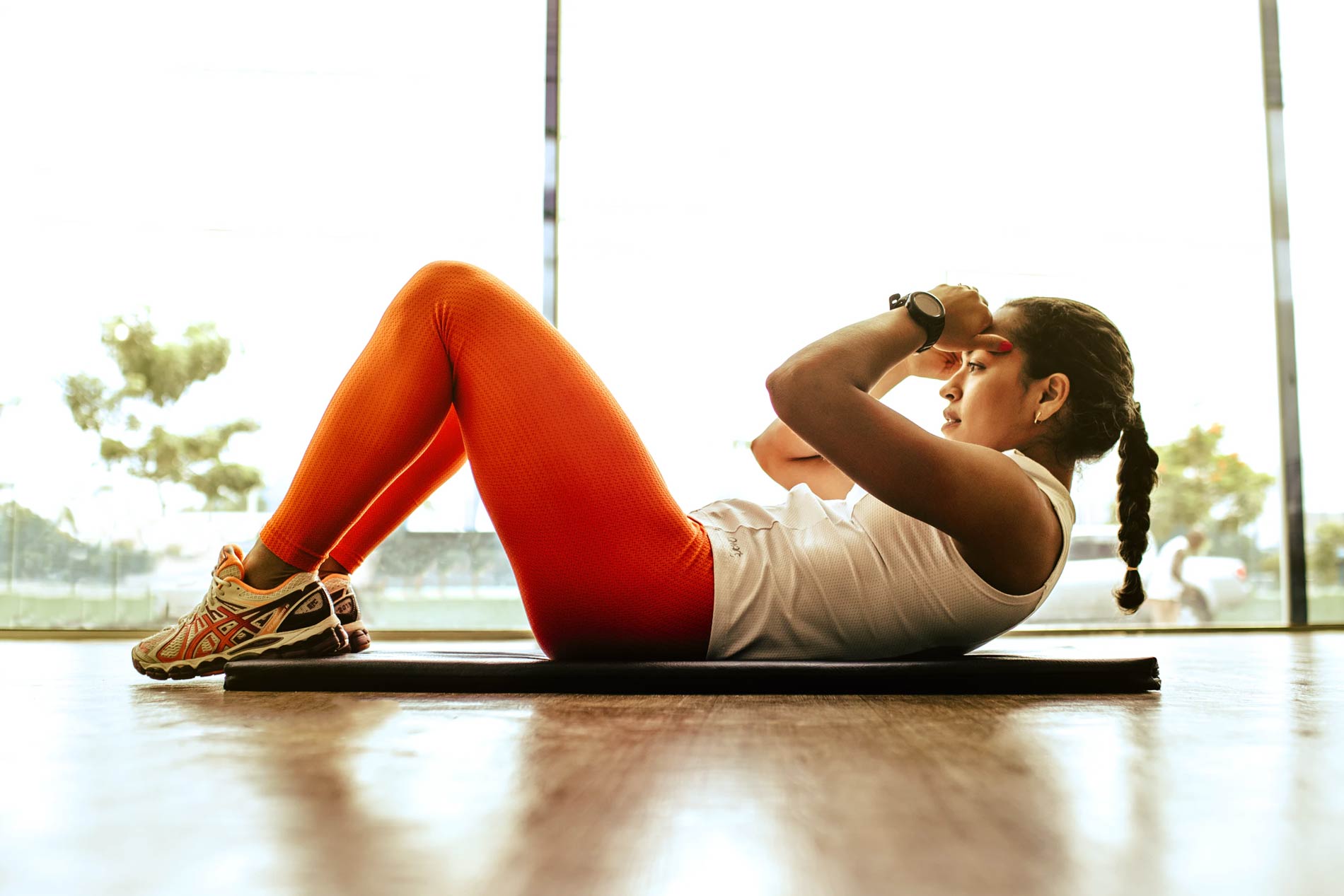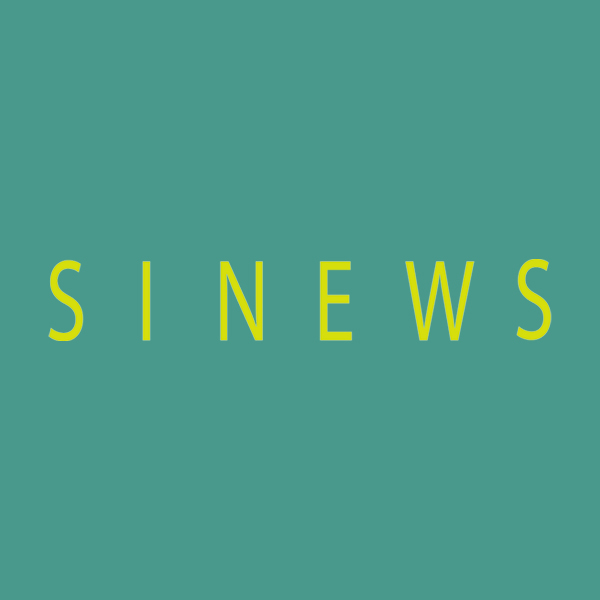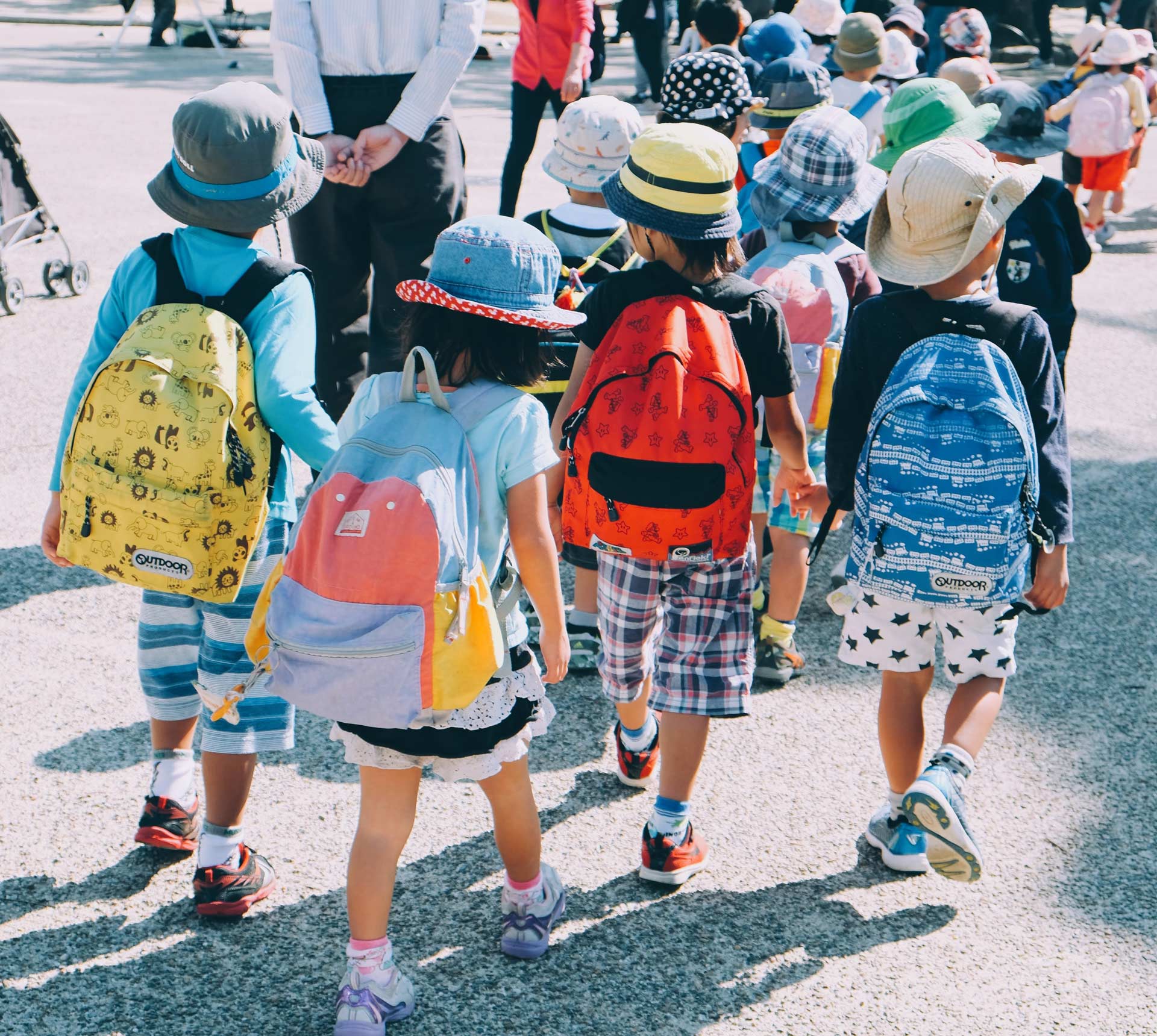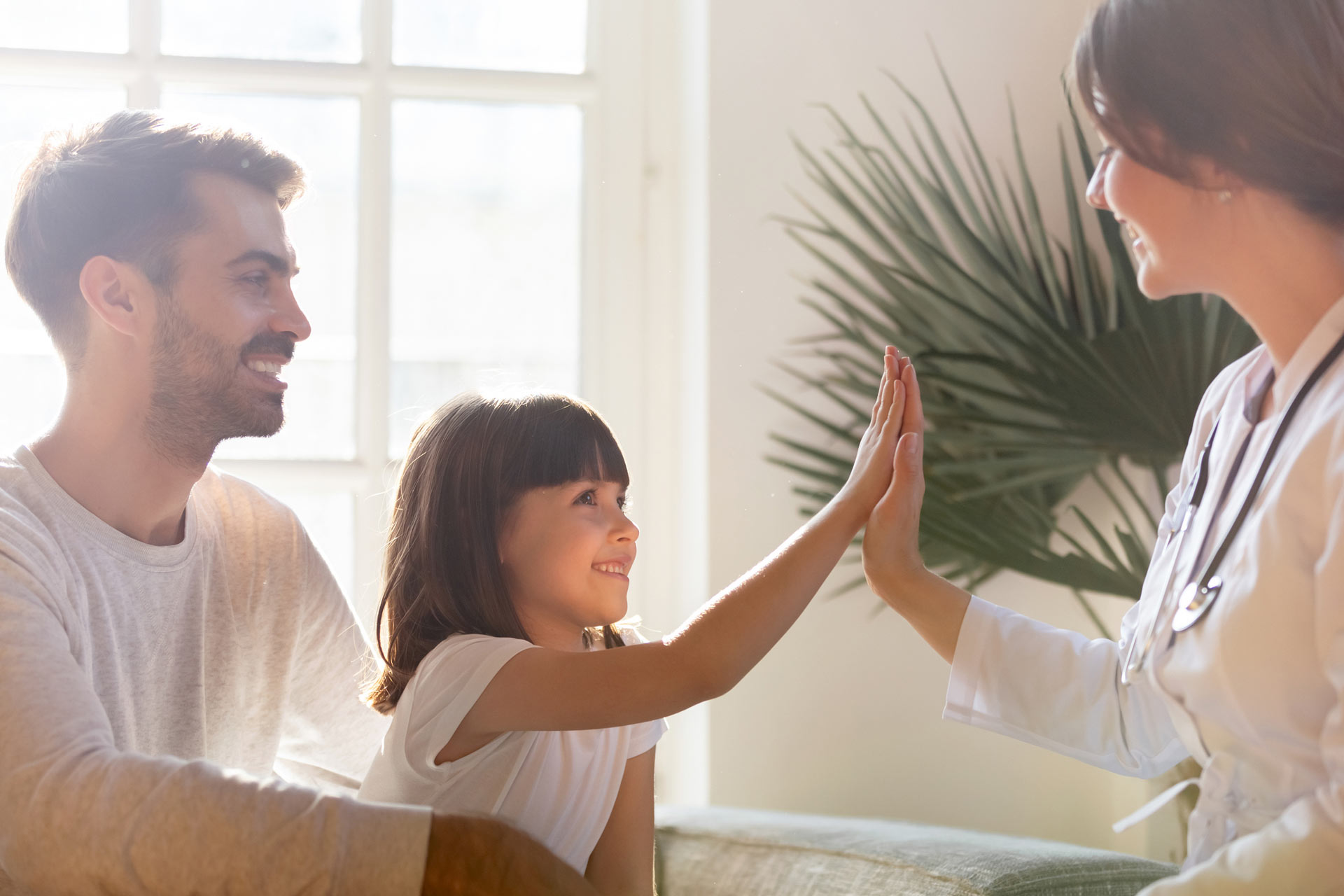Neurology in children. The Role of Child Neuropsychiatry (PART II)
In the second part of the article, we will provide some insights into four of the most prevalent neuropsychiatric conditions as follows:
1.-Epileptic syndromes: Temporal Lobe Epilepsy (TLE)
2.-Neurodevelopmental disorders:
2.a-Guilles Tourette Syndrome (GTS).
2.b-Autism Spectrum Disorders (ASD).
2.c-Attention Deficit and Hyperactivity Disorder (ADHD).
1.-TEMPORAL LOBE EPILEPSY
Temporal lobe epilepsy (TLE) is the most common of the anatomically defined syndromes accounting for around 60% of all patients with localisation-related epilepsy. Temporal lobe seizures produce varied and complex symptoms. It can become challenging for psychiatrists to distinguish these symptoms from similar presentations in other psychiatric conditions.
The most frequent cause of TLE is mesial temporal sclerosis (50-70% of cases), which is the slimming of the cortical hippocampal region of the brain. Mesial sclerosis is strongly associated with a history of childhood febrile convulsions, although in most cases aetiology remains unclear, that is, primary.
Temporal lobe seizures may take the form of simple (level of consciousness is preserved) or complex (reduced level of consciousness) and can be displayed as partial (movements of one part of the body) or generalized seizures (movements of the whole body).
A variety of autonomic features and visceral sensations have been described in so-called temporal lobe auras, being epigastric auras the most common of such presentations, that is, ill-defined sensations rising from epigastrium towards the throat. Other autonomic symptoms include changes in skin color, blood pressure or heart rate.
From a mental health perspective, it is worth noting that affective experiences have been commonly observed prior to temporal lobe seizures. Specifically, patients tend to complain about anxiety-related symptoms and subjective feelings of depression, guilt and/or anger, which are, of course, unpleasant. In addition, deja vú phenomena, that is, the patient erroneously reports having experienced the same reality before, have been frequently observed in those suffering from TLE. On the other hand, pleasurable effects of joy, elation or ecstasy can occur, although less frequently. In this regard, it has been speculated that Santa Teresa de Jesus may have suffered from TLE.
Of note, patient’s family members should be aware of the impact of aura on emotions, which can be associated with hallucinatory experiences and/or disturbed behaviour. More specifically, temporal lobe epilepsy sufferers can present with auditory, olfactive and/or visual hallucinations, which can be, of course, very stressful.
Not only patients with temporal lobe epilepsy can present hallucinations, but also visual and olfactive hallucinations can be displayed by people with dementia. Although auditory hallucinations can be considered as cardinal symptoms of schizophrenia, auditory hallucinations in TLE are an intrinsic part of the seizure, usually stereotyped, brief, evolving and lack an emotional response, that is, distress.
2.- NEURODEVELOPMENTAL DISORDERS
2.A Guilles de la Tourette Syndrome (GTS):
Guilles Tourette Syndrome (GTS) has been currently categorised as a neurodevelopmental disorder in the DSM 5, which is the most up-to-date classification of mental disorders by the American Psychiatric Association. GTS onset usually occurs at age 6 and there is a higher predominance in males than in females (3:1).
The aetiology (i.e., causes) of GTS remains poorly understood, although a combination of genetic, epigenetic and environmental factors have been postulated to underlie this syndrome. Truly, most patients with GTS have first-degree relatives with symptoms, which would provide support for a genetic component.
Regarding GTS presentations, the core characteristic is the presence of multiple tics which tend to go with forced involuntary vocalisations, which usually takes the form of obscene words or phrases (which is known as coprolalia). Specifically, GTS symptoms can be summarised as follows:
1.-INVOLUNTARY MOVEMENTS AND TICS:
Multiple motor tics (simple or complex) and at least one vocal tic is required for making a GTS diagnosis. Tics occur very frequently throughout the day almost every day for more than a year.
Tics are simple non-purposeful movements of functionally related muscle groups, which can be divided into simple tics which affect specific muscle group (for instance, eye-blinking) and complex tics, which involve several muscle groups, such as touching parts of the body. Phonatory muscles have been linked with vocal tics, such as sounds or grunt.
2.-BEAHAVIOURAL ALTERATIONS:
Psychiatric symptoms and behavioural disturbances in GTS patients can mirror features of obsessive-compulsive disorder (OCD), which may raise issues about the differential diagnosis between the two. More specifically, up to 28-65% of patients with GTS have been reported to have intrusive thoughts, which tend to focus on order and symmetry.
3.- COGNITIVE ISSUES:
To make matters more complicated, GTS patients can present with comorbid ADHD, which occurs in 31-91% of cases. Occurrence of ADHD is not associated with severity of the tic disorder, however. Other cognitive issues, such as executive dysfunction, have been commonly associated with GTS, which can have a very negative impact on their academic performance.
2.B. Autism spectrum disorders (ASD):
Today’s psychiatry has expanded autism boundaries to include a more heterogeneous group of patients that can present with a wide variety of symptoms and relevant differences in functional outcomes. Accordingly, the term spectrum has been adopted. In other words, ASDs include from patients with mild deficits to severely affected children and adolescents.
ASD core symptoms affect three domains:
1.- RECIPROCAL SOCIAL COMMUNICATION ISSUES:
ASD patients usually suffer reciprocal social communication issues, that is, problems in setting up bidirectional language. More specifically, verbal and non-verbal communication deficits have been described, such as catching doble senses and jokes, being able to create stories or the ability to flexibilise the language, poor eye contact, abnormalities in tone, intonation and rhythm of the conversation and/or limited range of gestures.
2.-STEREOTYPED AND REPETITIVE BEHAVIOURS:
ASD children tend to struggle to regulate their own behaviours, that is, changing routines and activities. As a result, ASD patients show restrictive and stereotyped behaviours, and an inappropriate lack of cognitive flexibility which affects their quality of life, including interests, habits and play. Patients with ASD usually lack creativity and imagination which turns in repetitive play more focused on objects and sequences.
Additionally, abnormal specific sensory interests have been reported in children with ASD. For example these patients tend to struggle with new colours, textures, smells and/or sounds, which can even trigger an outburst at home. Although the neurobiological mechanisms underlying these sensory issues remain unknown, the role of hyperreactivity in specific brain regions has been widely accepted.
Also, parents and caregivers should be aware of repetitive non purposeful movements, such as balancing or flapping, as major symptoms of classic ASD.
3.-SOCIAL INTERACTION DEFICITS
Most importantly, ASD has a significant impact on social day-to-day life. These children tend to become socially isolated as a result of difficulties in making and maintaining social relationships, which is a core symptom of the disorder. To make matters worse, lack of understanding of conventional social rules (for example grief, parties or celebrations) may result in inappropriate behaviours. Therefore, all the stakeholders involved in the care of ASD children have a role in mitigating their social isolation. This noted, early detection leading to early intervention has been demonstrated to be the most successful strategy to improve short- and long-term outcomes in ASD patients, thus improving their quality of life as well as reducing the burden of their family members and careers.
2.C. Attention deficit and hyperactivity disorder (ADHD):
Diagnosis of ADHD tends to be confirmed at around 6-7 years old, although earlier symptoms have been observed, which may be linked with worse prognosis. Up to 5% of children may suffer from ADHD and approximately half of them will continue to display ADHD symptoms in adulthood, particularly if untreated.
ADHD core symptoms can be categorised in three main domains, which are detailed below. Although most ADHD patients present with abnormalities in the three domains, more rare types of ADHD with deficits in a single domain have been described. Also, it is worth noting that many day-to-day behaviours displayed by ADHD children actually involve several domains, which therefore overlap each other.
As alluded to above, currently available pharmacological and non-pharmacological interventions can alleviate these symptoms and reduce their impact on functioning. Moreover, if (early) treated, ADHD can get ‘cured’. Hence, no ADHD patient should be prevented from receiving such a successful treatment, which, otherwise may have long-term implications.
1.- ATTENTION:
ADHD patients have significant difficulties in staying focused on cognitive processes, such as following multiple-step instructions and/or picking up specific details during a conversation. This inattention is not related to motivation. Thus, not only inattention can be observed when carrying out school tasks, but also during leisure time.
In addition, these children seem to get easily distracted by stimuli so they may not listen to others when directly questioned. Moreover, poor compliance with instructions in ADHD patients have been linked with poorer academic performance. Consistent with this, parents complain of their tendency to losing personal belongings and avoidance of those tasks requiring high levels attention/concentration.
2.- HYPERACTIVITY:
Hyperactivity observed in most of these children led to the conceptualization of ADHD decades ago. In particular, ADHD children are unable to keep still without moving different parts of the body, e.g. restless legs. Fidgetiness can be easily picked up by non-professionals, e.g. restless legs, rolling or rubbing their hands and/or having tics. Sometimes these features can be observed during sleep time.
Parents of children with ADHD have also reported that their children tend to choose games which do not involve cognitive processes. Rather, they prefer to play with more physical-based games and they appear to be unable to wait turn, e.g. queuing, travelling by plane or going to the cinema. These behaviours are frequently picked up by teachers who observed their inability to keep seated and to follow lessons at school. Moreover, ADHD children are usually described as talkative people who can become disruptive by interrupting others in conversations, which may contribute further to worsening their academic performance.
3.- IMPULSIVITY:
Impulsivity in ADHD refers to a tendency towards a decision-making style characterised by not reflection on consequences. As a result, they tend to take much risk, e.g. crossing the road without checking the traffic, climbing high places or walking around closed areas. These decisions can result in accidents (for instance, while cycling) and fractures.
ADHD-related impulsivity also involves emotional regulation and communication issues. Examples of these behaviours include interrupting others in conversations, prompting inadequate responses, lending others’ belongings and/or jumping queues.
Similarly, impulsivity is observed in terms of emotional regulation and understanding their own emotions, which they can express inadequately.
Summary and conclusions
Through this article we have intended to provide an overview of the role of Neuropsychiatry, which as a branch of psychiatry remains unknown to many people, in the management of children suffering from neuropsychaitric conditions.
In particular, four highly prevalent neuropsychiatric conditions, which have been detailed above and have a relevant impact on child neurodevelopment, highlight the importance of better understanding neuropsychiatry. On reflection, professional staff should undertake specific training in neuropsychiatry, which should result in high-quality multidisciplinary teams delivering care to these complex children in need.
To sum up, highly qualified neuropsychiaty professionals should be prioritised in order to better manage children and adolescents suffering from neuropsychiatric conditions. In particular, the aforementioned complex needs of these patients and the high prevalence of neuropsychiatric disorders such as ASD and ADHD require integrative treatments delivered by multidisciplinary teams working collaboratively from a multiagency approach.
Sinews MTI
Psychology, Psychiatry and Speech Therapy
Operation "Back-to-School": Tips for a Better Adaptation
A new academic year is about to start. While the children take the opportunity to take the last dips of the summer season, parents start preparations for back-to-school: uniforms, books, school supplies… Back to routine!
Many families have difficulty getting their children back into the habits and schedules of the school year and, as a result, the first few weeks can be difficult.
From Sinews we offer you some tips to help your children adapt to the routine more easily:
- It is essential to start incorporating the school schedule at least one week before the school year begins, that is: set the alarm clock at the indicated time, eat at the time they usually do at school and go to bed early. In this way, the first week of school his biological clock will be more accustomed to the new schedule and early mornings will not be so difficult.
- Involve them in the process, making them part of the preparations. A good idea is to go shopping with them for school supplies and give them some freedom of choice.
- It would also be interesting to make a schedule together, in which we can include: the subjects of each day, extracurricular activities, the stipulated time for homework and leisure time, bath time and bedtime. Ideally, it should be placed in a highly visible area of the house, so that the child gradually becomes familiar with it.
- Finally, we cannot forget the importance of talking with them about the upcoming school year and the new experiences that await them: the joy of reuniting with classmates and fun times, their new subjects, possible difficulties related to academic content … Home should be a safe environment where they can share their concerns.

By putting these tips into practice, we will achieve a better adaptation to the new school year.
Last but not least, we remind you that in the case of those students who have difficulties keeping up the with the academic pace, Sinews offers an specialized academic support service, in which our professionals will help them to assimilate the contents and will teach them a series of strategies and study techniques in order to improve their performance.
Written by Alba Ferrero, responsible for specialized academic support services – study coach
Neurology in children. The Role of Child Neuropsychiatry (PART I)
As parents, it is important to ensure the health and safety of our children. With advances in health science, today more than ever, we have the tools and professionals that help us even with less common health conditions, including diseases and pathologies associated with the nervous system, which many times , develops from an early age.
Therefore, it is crucial to know what neurology is, how some neurological conditions can affect children, the role of health professionals such as neuropsychiatrists when treating these conditions and some of the most common pathologies associated with the nervous system and can affect the development of our children. In the following article we will explore this subjects.
Child and adolescent neurology
Neurology is a branch of medicine concerning especially with the structure, function and diseases of the nervous system. Our nervous system is divided in Central Nervous System (CNS) and Periferic Nervous System (PNS). The first one includes the brain, cerebellum, medulla oblongata and spinal cord. The periferic nervous system includes all the extensions from central organs to muscles and periferic senses. eurology involves a wide range of CNS-PNS related diseases from cognitive conditions (related to memory processes and other brain functions such as writing, reading or calculations) to neuromuscle or movement diseases.
Child Neurology is also a widely diverse and extensive science. Child Neurology includes genetic conditions (such as Rett Syndrome or metabolic myopathies) nerodegenerative issues (such as multiple sclerosis) structural and biological illnesses (such as complex epilepsies) infectious diseases (such as meningoencephalitis) or neurodevelopmental conditions (such as Guilles Tourette Syndrome)
Neuropsychiatry is a branch of Neurology linked to Psychiatry. Currently, this subspecialty does not exist as such in Spain. However, neuropsychiatrists are widely recognised across most European countries including the UK and Germany. In these countries, all the professionals dedicated to Neuropsychiatry undertake specific training programmes for acquiring necessary skills for the manegement of patients with neuropsychiatric disorders. As a result, there is a shortage of Neuropsychiatrists in Spain, which is even more concerning in terms of neuropsychiatrists in children and adolescents. This results in an unacceptably high number of children and adolescents with undiagnosed/untreated neuropsychiatric conditions who also have very complex unmet needs in Spain. In other words, these patients seem to be neglected by the Spanish medical health system. The interface between Neurology and Psychiatry is a random consensus by modern science, a simple response to professionals´ needs of categorizing conditions. Over the last few centuries, clinicians have made big efforts to better understand human body functioning. In order to do so, medicine has been artificially split up in different specialties. However, such an approach may have ignored close relationship between mind and body, which particularly applies to neuropsychiatric conditions.
So far, the division between Neurology and Psychiatry can be summarized as follows: Conditions in which organic alterations can be objectively shown by diagnostic tests (for example MRI, EEG or blood tests) belong to Neurology (such as epilepsy) and Conditions with no evidence of structural damage would fall under the scope of Psychiatry (such as bipolar disorder). As noted above, bipolar disorder is one of the most common “mental” disorders. However, it is intriguing that first line treatment for bipolar disorder, that is so called mood stabilizers, includes several antiepileptic drugs such as valproate, carbamacepine and lamotrigine. Hence, it could be speculated that both conditions may share some neurobiological underpinnings. This said the link between neuropathology and psychiatry appears to be stronger tan previously thought. Also, well-known genetic vulnerability to bipolar disorder, including some candidate genes, suggests that currently available tests may fail to identify its neuroanatomical correlates. In summary, our daily clinical practice in psychiatry is full of examples in which the interface between Neurology and Psychiatry is far from clear. Thus, the vast majority of patients with neurologicval and psychiqtric conditions present with very complex symptoms, which reflect the complexity of human brain rather than an arbitrary diagnostic category.
Over the last decade science paradigms have significantly changed. For instance, although genetic has been considered a major risk factor for developing mental disorders, this concept has evolved to so called epigenetic. In short, while genes were suggested to underlie stable markers of diferent diseases, that is, something that can not be modify through intervention, modern reasearch has shown that genes expression can vary depending on the influence of external factors, that is environment. The gen-environment interaction has been labelled as epigenetic. This model has had a real impact on today’s Neuropscyhiatry resulting in a more comprehensive approach to mental and neurological issues.
Child neuropsychiatric conditions are highly prevalent. These conditions involve a wide range of illnesses which share neurobiological factors and mental symptoms. Therefore, an integrative approach to treatment of child neuropsychiatric conditions is required. This approach should be provided by multidisciplinary teams integrated by Child Neurologists, Child Psychiatrists, Child Neuropsychiatrists, Child Psychologists and Family Therapists.
In addition, children present with special features which make the management of neuropsychiatric conditions even more challenging:
- CHILD NEURODEVELOPMENT:The majority of neuropsychiatric conditions are characterised by symptoms which partially overlap with features of normal development such as stereotyped movements, regressions or sleeping disturbances. A profound knowledge of child milestones is therefore required for making an accurate diferential diagnosis. In particular, distinguising normal signs of different madurative stages from pathological symptoms should characterised all the members of this multidisciplinary process.
- PLASTICITY OF CENTRAL NERVOUS SYSTEM DURING THE DEVELOPMENT: During the childhood CNS is a complex neuronal network with high levels of plasticity and astonishing malleability. That is, children´s brain continuosly changes during the first two decades of life. This means that the same structural damage in an adult brain can cause huge symptoms in comparison with minimal symptoms during the development. However, this results in an increasing complexity in the diagnosis process, management and treatment of child neuropsychiatric conditions.
- COLLATERAL INFORMATION FROM PARENTS:: When gathering information from parents, two steps need to be taken: First one being selecting those behaviours which may be associated with pathological symptoms as opposed to normal developmental features. the second step is among potential pathological symptoms, clinicians should be able to make the differential diagnosis and translate these symptoms to potential neuropsychiatric conditions. For instance obssesive-compulsive behaviours vs repetitive play which is normal during the development or abnormal sensory experiences such as hallucinations vs imaginative play such as imaginary Friends. In keeping with this, professionals such as GPs, teachers, counsellors or paeditricians play also an important role in early detection as the main referrals when picking up potential mental health related issues. In order to provide a better understanding of the challenges above, we are going to summarise two major child neuropsychiatric conditions: epileptic syndromes during neurodevelopment and neurodevelopmental disorders.

In the two parts of this article we are going to develop some of the entities that can be treated by child neuropsychiatry. More specifically, we are going to talk about 4 diseases with a high prevalence in the population, we will start with 2 of the most common conditions:
- Epileptic syndromes during the neurodevelopment: these syndromes involve a number of neurological processes in which convulsive or non-convulsive seizures can emerge during the neurodevelopment. The vast majority of these conditions have been reported to have an impact on CNS maturation which suggests that patients with early epileptic syndromes can presetn with a combination of neurological issues namely seizures, epileptic status or postcrisis symptoms, and behavioural problems such as cognitive disorders, emotional dysregulation or communicative issues. Temporal lobe epilepsy is the cornestone of epileptic neuropsychiatric síndromes which is commonly caused by a structural damage in the temporal lobe. Given the involvement of the temporal lobe in major cerebral functions such as audition, smells and emotions, temporal lobe epilepsy is not only characterised by seizures but also by psychiatric symptoms such as auditory and/or olfatory hallucinations, deja vù or deja vie phenomena or behavioral changes.
- Neurodevelopmental disorders: While the specific origin of neurodevelopmental disorders remains unclear a number of factors such as genetic predisposition, environmental factors and structural brain damage, have been postulated. The most common age of onset is from 2 to 6-7 years, that is in early development. As a result, this children usually present with cognitive, metacognitive, emotional and communicative issues.
In the second part of this article we will provide more detailed information on three representative examples of neurodevelopmental disorders such as Guilles Tourette Syndrome, ADHD (attention deficit and hiperactivity disorder) and ASD (autism spectrum disorders) ,all of which are clinically characterised by a wide spectrum of symptoms despite their common neurodevelopment related origin.
Sinews MTI
Psychology, Psychiatry and Speech Therapy
I have been diagnosed with cancer, now what?
Being informed that we have cancer is usually a huge shock that can leave the person who receives such news in a state of emotional disturbance. It is true that there is no protocol on what to do or how to act when faced with this type of situation, but experience shows that there are certain things that can be done to soften the impact of the news and take care of our physical and psychological well-being. Here are four ideas that can help us deal with such a process.
1) Reduce uncertainty about what is happening to us: Cancer is a disease caused by an abnormal growth of cells that can present itself in many ways. The relative severity of a 1 cm mass versus a 3 cm mass is different, it is also different depending on the place in our body where it is located, our state of health, previous pathologies, if there is metastasis, the tumor margins (outer edges) and the state of the lymph nodes closest to the tumor mass among other factors.
Each case of cancer is unique, as there are so many variables that can affect the process, and only a specialist in the field can explain with accuracy the state in which we find ourselves. Understanding these details about the is crucial, if we do not do so, we may overestimate the severity of our tumor, or even underestimate it. The role of the oncologist in this step is fundamental, he is the professional who will help us see what is happening to us and reduce uncertainties regarding our future. It is therefore very important to ask our doctor everything that is relevant to us, so he can help us manage our doubts and fears.
Some of the most common questions that arise at this time are related to the severity of the problem (especially with regard to cancer mortality), the possible physical and health consequences, the options for intervention and possible consequences, and ways in which the diagnosis could change the patient's personal and work life (whether it will make him/her unable to work or carry out some of the activities that he/she usually does on his/her own, etc.).
It is always good to remind ourselves that we have the right to ask about all these things, and no doctor will deny us this information if we ask for it. It is very advisable that we ask everything we want to know.
2) Keep an open line of contact: In line with what was mentioned above, many times the shock of the news does not make it easy for these doubts to during consultation, but rather they appear over time. It is also possible that as the treatment or the cancer progresses, new concerns arise that we did not have before. If we do not have a way of raising these doubts with our professional, it is very easy to fall into the temptation of ruminating on them (overthinking), catastrophizing about the possible answers to these questions, or looking for information on the Internet about what is happening to us (not a very advisable option, since we are not objective when we look for data about what is happening to us, we pay more attention to the most negative and extreme information due to our own biases.).
Insisting on the aforementioned, having a line of contact with our medical professional will help us avoid these strategies that will certainly increase our anxiety, as well as bringing a generally supportive figure during the course of the problem.
It is convenient to remember that doctors are professionals with a very heavy workload and the fact that they have not offered us a method of contact does not mean that they cannot give it to us if we require it, Even the best professional can forget to do so on a bad day!
3) Managing emotional discomfort: After a cancer diagnosis, it is normal to experience a wave of negative emotions, guilt, anger, sadness, anxiety, helplessness, and sometimes even embarrassment when it comes to telling others about it. All these emotions respond to a normal process of adaptation to a change of this magnitude.
The first thing to know is that we are not alone. Even if for some reason (such as living abroad) we cannot count on family and friends, there are always resources that we can turn to for support at times like this, and that will help us when we need it most. Support groups of health institutions, associations of cancer patients, but more importantly for this case we can always ask for the help of a mental health professional specialized in the subject. Managing this type of discomfort with help is always easier than suffering alone.
Often our initial instinct when suffering so many negative emotions is to avoid them by distracting ourselves and shutting down emotionally. Even if this is a strategy that can make us suffer less short term, it is not very advisable, since we only postpone the problem and when we eventually face it, it will hit us harder. Distancing ourselves from others and not doing the activities that we normally did due to apathy is something that sometimes happens in these situations but finding the strength to do these kinds of things is precisely the one thing what will help us to move forward with more energy. This is not a call to force yourself to do all kinds of activities and punish yourself if you do not manage, but rather it is an invitation to start understanding that if you feel low mobilizing is something that will always help you feel better.
4) Manage the anxiety of the process: Anxiety problems are attracted to uncertainty like a metal to a magnet, and unfortunately during the development of cancer there is a lot of uncertainty. The duration of the problem, of the treatment, the consequences they may have, and future relapses are unknowns that bring up mental scenarios that may or may not happen and that will surely take their toll on us. As a general attitude it is good to remember that what we think makes us feel certain things (for example, if I assume in the face of this uncertainty that my case will get inevitably worse, I will feel terribly distressed every time I think about it) and to remind ourselves that we do not know what is going to happen since I cannot see the future. The solution here is not to force ourselves to have positive thoughts, but to be pragmatic; we do not have a crystal ball to see what will happen, therefore it is better to face problems (e.g. possible relapses) if and when they occur, not before they appear.
Developing techniques to deal with negative thoughts and other manifestations of anxiety (panic attacks, apathy, fatigue, avoidance) may be a good idea. Techniques such as Mindfulness and meditation, relaxation, and cognitive exercises in which we learn to identify distorted thoughts are particularly useful for these situations. In this regard it is essential to highlight the figure of the psychologist as a resource that will help us achieve these goals and better manage the situation in general.

Cancer is an extraordinarily complex problem in terms of how to deal with it, but the fact that it affects so many people has generated a highly specialized body of professionals who focus on treating its physical and psychological aspects. If you have been diagnosed with cancer, you are not alone, there are many people who can help you if you want and need it, lots of encouragement and we will be here if you decide to come to us.
Sinews MTI
Psychology, Psychiatry and Speech Therapy
Pensamientos Obsesivos de Tipo Sexual
Question
Hola,
Hace aproximadamente tres meses, sufrí una crisis muy fuerte con pensamientos obsesivos y dudas acerca de mi orientación sexual (miedo a ser Gay), detonada por haberme masturbado viendo porno transexual y homosexual (cosa que muy ocasionalmente hacia y jamás me causó problemas). Decir que siempre he sido heterosexual, sin ningún tipo de duda. Los pensamientos me incapacitaron hasta el punto de estar en cama, estaban desde que me levantaba hasta que me acostaba (siendo peor por la mañana). Analizaba todos los síntomas físicos de mi cuerpo al ver hombres por la calle, por ver si me excitaba, entre otros «rituales».
Todo cedió, y estuve fantástico con una chica, con erecciones y placer como nunca, hasta ahora que volvieron los pensamientos por un detonante menor. Otra vez incapacitantes, con el día pasado en cama y analizando 24/7 mis respuestas y demás.
Decir que me habían bajado hace unos meses la dosis de paroxetina a 10mg. Yo la empecé a tomar hace cinco años por una crisis muy similar pero con pensamientos de otro tipo como que me estaba volviendo loco, o me estaba entrando una enfermedad neurológica (el detonante fue una prueba de Estimulación Magnética Trascraneal de la Facultad que me llevo a pensar lo anterior). Con la paroxetina todo mejoró, hasta esto de los pensamientos de homosexualidad.
¿Será la bajada de la medicación (aunque han pasado cinco meses o así) que ha hecho que vuelvan esos pensamientos obsesivos, por ser solamente 10mg?
¿Será un problema de sexualidad real?
Por favor, me gustaría saber la opinión de los expertos,
Gracias de antemano
Answer
Querido amigo.
Antes de nada, agradecerte que hayas compartido esta situación tan difícil con nosotros para que podamos ayudarte.
Cuando psicólogos y psiquiatras hablamos de los pensamientos obsesivos, decimos que son un tipo de pensamiento recurrente, involuntario, y que a veces tiende a generar mucho malestar en las personas que lo sufren. Este tipo de pensamiento tiene la mala costumbre de ser más recurrente y molesto cuanto más malestar genera su contenido (ya que muchas veces es el propio agobio que nos genera una idea el que nos deja ese “miedo” y hace que vuelva).
Por lo que comentas en la pregunta, las dudas y pensamientos obsesivos sobre tu sexualidad comenzaron hace tres meses, y desataron una oleada de conductas de comprobaciones físicas (prestar atención a los cambios en tu cuerpo) y psicológicas (ver tu nivel de excitación) que pretendían aclarar tus dudas respecto a tu sexualidad. Al parecer estos pensamientos obsesivos y las comprobaciones para lidiar con ellos empezaron años atrás en otro aspecto de tu vida (la salud) y ahora se reflejan en tu sexualidad, llegando hasta el punto de ser incapacitantes para ti.
Quisiera comentarte que el hábito de hacer comprobaciones es una reacción muy común cuando nos encontramos nerviosos o ansiosos, que pretende mantener las cosas bajo control y calmarnos, “entender” lo que nos está pasando. Aun así, lo único que se suele conseguir con este tipo de comprobaciones es que la ansiedad y las dudas se disparen más actuando como más gasolina para el fuego, no es de extrañar que esta situación haya llegado a donde ha llegado, por desgracia. Luchar contra el impulso de hacer comprobaciones y dejar que el malestar se vaya poco a poco y sin cuestionarlo continuamente suele ser una receta que trae mejores resultados.
En esa línea quisiera comentarte que, aunque puede que la bajada de la medicación haya podido contribuir al problema que comentas, intentar cuestionarte qué ha causado ese cambio puede ser un tipo de comprobación que alimente el problema. Es muy complicado afinar que porcentaje de causa tiene cada una de las cosas que ocurren en tu vida, y aunque fuésemos capaces de hacerlo, ¿no sería más útil aprender a gestionar estas situaciones que obtener una respuesta que no va a solucionar el problema?
Te animo como primer paso para enfrentarte a la situación a cambiar el foco de cual es causa de mi problema (tengo que controlar si es la medicación, o es mi sexualidad, o es que me siento mal…) a cómo te sientes en el momento actual respecto a ese “problema” (focalizarte más en el “aquí y el ahora, es decir, en el momento en que vivas tu sexualidad centrarte en las sensaciones que te genera, repetir lo que te guste y si no te gusta algo darte cuenta). Responder a esas dudas en momentos en los que “no toca” no suele ser de mucha ayuda.
Respecto a las dudas sobre la sexualidad, me gustaría tranquilizarte diciendo que ningún pensamiento obsesivo la va a determinar. Este tipo de pensamientos es un hábito que podemos alimentar (con las comprobaciones como te he contado antes) o hacer que vaya a menos, pero la sexualidad es algo mucho más complejo, y desde luego no determinado por la manera o el contenido de lo que pensamos.
Las fantasías sexuales o el material que utilizamos para disfrutar de nuestra sexualidad no tienen por qué ir en línea con lo que luego hacemos en la vida real, una persona puede fantasear con realizar prácticas fuera de lo común pero no querer hacerlas en su vida. Nuestra vida sexual y nuestras fantasías son dos cosas distintas.
Pese a ello, si aun sin esos pensamientos sigues teniendo dudas sobre tu sexualidad, consultar con un terapeuta puede ayudarte a aclararlas.
Espero sinceramente que esta respuesta te sea de ayuda y te mando un saludo afectuoso.
Sinews MTI
Psychology, Psychiatry and Speech Therapy
We are Getting a Divorce, How Can We Protect Our Children?
A divorce can be a very difficult process to cope with as a couple, as it implies a grieving process in which anxiety, fear, sadness and big changes are the main protagonists.
However, what can make this process more difficult is having children who are inevitably involved. In fact, a separation that isn’t dealt with in a healthy way can lead to negative consequences for children, such as a decrease in school performance, social distancing, feelings of despair and loneliness, anxiety and depression.
Moreover, children’s age plays a key role in the emotional impact that the divorce may have on them:
- Children up to 4-5 years old
They may feel confused by the new changes that are taking place, not quite understanding why the separation is happening or why they must divide their time between each parent. - Children from 5 to 12 years old
Within this age group, it is frequent that children feel guilty because of the separation, which can then make them feel frustration and sadness. - Teenagers:
The initial emotion that can appear in teenagers is anger. Now instead of blaming themselves, what usually happens is that they blame one or both parents for the divorce and for the changes this implies for them.
Therefore, in order to protect these children in the best possible way, from psychological harm due to the separation, it is necessary to attend to the following:
Communicating the news:
The way the children receive this news is extremely important in order to start this process off on the right foot, and can play a big role in their coping skills for the rest of the separation.
Therefore, it is especially important to follow these guidelines:
- Right time and place: This must be in a safe and calm place, where they have the time and space to listen thoroughly, express themselves and ask certain questions they may have.
- Content which is true and with limited details: the children must know what is happening and how things are going to change, adjusting their expectations adequately. However, you must be careful not to give too many details, taking into account the importance of setting boundaries to avoid involving the children in the parents’ issues, and giving them responsibilities and information that don’t belong to them.
- Same message on both sides: it is extremely important that they hear the same version from both parents, which is why it is advisable that you speak with each other beforehand to agree on the message that you want to convey.
- Emotional care: sometimes children can feel guilty and frustrated for what is happening, consequently taking the blame for the divorce. Therefore, it is very important to attend to their emotional needs, making it clear that this has nothing to do with them and it doesn’t affect the love you both have for them.
Adapting to the separation:
You must remember that this is a drastic change for the children, the same way it is for the parents, and in order to achieve the healthiest adaptation it is important to remember:
- Little change within big change:
There are going to be inevitable changes, such as two different houses and separate time with each parent, however, it is beneficial that within your possibilities, there is certain homogeneity. This can be translated into continuing at the same school as they did before the separation, having the same friends from school or their neighborhood (making it easy for them to see each other), having the same routine in both households (schedules and habits), and same disciplinary style from both parents (boundaries and rules). - Do not involve the children in disagreements or conflicts:
There will be times in which you will find yourselves arguing or disagreeing in front of your children. When this occurs it is important that you indentify the red flags that this is starting to happen, and then do one of two things: put a stop to it and leave it for another moment where your children aren’t present, or take the argument to another place away from them and where they can’t hear you. - Don’t make the children your mediator:
Another way of not involving your children is to not assign them the role of messengers. If they find themselves trapped in this role, they could start to feel pressured, helpless and frustrated, and this could damage their mental wellbeing. - Don’t let them take on the role of caretakers:
It is not uncommon that a child facing their parents’ divorce sees their mother or father affected and wants to act as a caretaker to comfort them. This gesture can be taken as a sweet and loving act, but accepting this care mustn’t be misinterpreted as being healthy. A child needs to be taken care of by their parents, and not the other way around, which is why it’s important not to mix these roles, otherwise it can leave the child feeling unprotected and taking on a caretaker role that doesn’t correspond to them. - Attend to their needs:
A divorce isn’t easy for any of the people involved, and it can become so easy for us to focus on our needs and struggles during the process, sometimes neglecting our children’s needs. You must remember that they are also struggling and they need taking care of more than ever. - Take care of yourself:
This is as much of a self-care act as it is an act of taking care of another person. We can’t take care of other people if we don’t attend to our own wellbeing first. As the saying goes “you can’t pour from an empty cup”. As mothers and fathers, it is important for you to take care of yourselves in order to be strong, to be present and be the best parents for your children.
A divorce isn’t an easy process, for neither parents nor children, but there are ways to make it more manageable and healthy, and if you are reading this article you have already made a step in the right direction to protect your children and give them the care that they deserve.
Division of Psychology, Psychotherapy and Coaching
General Health Psychologist
Adults, adolescents, couples and families
Languages: English and Spanish
What Type of E-Leader are You?
What kind of leader are you or how do you lead yourself in virtual environments? I ask you this question and not simply what kind of leader you are because at this point and after years of tsunamis of theories and talks about coaching and leadership, surely you have already identified with the charismatic leader, the authoritarian, the democratic, the inspiring ...
But suddenly, a global pandemic arrives that does not seem to end and if it does it will be after a technological sprint and having turned our work environments into virtual environments. With this new board and new rules, we are forced to redefine our leadership style, both with our teams and with ourselves.
Perhaps redefining is not the exact word but ADAPT, adapt to the new digital ecosystem, and adapt those factors of our leadership that gave us identities such as social skills, empathy, teamwork or ways of providing feedback.
An interesting bibliographic review carried out among universities in different countriesContreras & Baykal, 2020) shows how teleworking can offer numerous advantages both in terms of the well-being of employees and their productivity, but only if effective e-leadership is present. On the contrary, moving to remote work can involve numerous risks. These changes include both the adaptation of structures, trying to make them less hierarchical, and fostering trust and quality personal relationships among team members as well as a genuine interest in people's well-being.
When examining this research, I thought how applicable this is not only for leading teams but also for self-leadership, especially in self-employed workers or in those who start a new project alone. Training our cognitive flexibility, prioritizing our well-being, and maintaining contact with other people in our sector will be decisive both for the telework experience and for quality and success.
Leading remotely poses numerous challenges, but here I show you 3 of the ones that we have been able to observe the most in recent months both in fieldwork and research:
- Maintain team spirits and productivity.
- Manage uncertainty.
- Successfully management of new hires.
Obviously, the technological factor and digital skills have played a key role in adapting to teleworking, but in my experience with greater or lesser effort and with the necessary support and motivation, even the profiles with less prior exposure to technology have finished adapting.
It is therefore not surprising that we put the greatest focus on people. In the era of technology and precisely due to the automation of processes, some think that a wave of dehumanization of work will come, but it is precisely this automation that gives greater importance to personal skills and social relationships. Skills such as emotional intelligence, creativity, collaboration, and of course identity and purpose have become essential both in telecommuting and in the job market.
La Emotional intelligence is a differential variable when it comes to recognizing both how we feel and the state of mind of our team, which will allow us not only to be more empathetic leaders but also better communicators since people tend to prefer to listen to those who listen to us to those who show a coherent communication with how we feel, this makes us feel validated. A study carried out with 138 managers from 66 different organizations showed the relationship between the emotional intelligence of leaders and the creativity of their teamsRego & Sousa, 2007), a skill that for any company has become one of its main assets thanks to the need for constant innovation.
How do I do it in a virtual environment? There are multiple ways to develop emotional intelligence, from the labelling of emotions and their regulation (in this blog you will find a fantastic explanatory article written by Amanda Blanco about it), to the planning of informal meetings in small groups or there are even organizations that implement their own "mood thermometer" to be aware of the team's mood.
La Collaboration is another of the capacities that we must train in the online environment, not only because feeling part of a team's work gives us a greater identity and affinity with the organization but because, like emotional intelligence, it stimulates innovation and creativity. The University of Ludn, in Sweden, published in 2019 a study on the organizational climate and the promotion of creativity and innovation of employees, showing how environments that favor a space for entrepreneurship and in which challenges are shared are capable to foster these skills.
How do I do it in a virtual environment? The ease of convening meetings and being connected has made many people feel like they are on a constant journey from one call by zoom, teams ... to another, with an endless list of tasks and with high feelings of guilt or inefficiency in their breaks. . An alternative is to respect these breaks, to promote behaviours on the part of the leader at the end of the workday that encourages the team to enjoy other tasks or areas of their life, thus allowing ideas to emerge in moments of “unfocus”.
Finally, and concerning the purpose and identity, perhaps this is the most difficult part to adapt to the online environment, especially in cases of new incorporations or in times of high tension and uncertainty, but it is precisely that identity and purpose one of the variables that it correlates more significantly with the commitment and satisfaction of people in their jobs (even at the same level as salary and flexible hours). Therefore it is also one of the fields that have most attracted neuroscientists to research.
How do I do it in a virtual environment? Some of the ideas are the construction of the team objective and even the construction of the dynamics and the work organization that will be followed. A dynamic aimed at achieving objectives but above all COHERENT with the expressed values. For this, we can look for workspaces without sharing documents, where we can simply see each other, get to know each other, and share how we feel most comfortable working and how we each want to develop our talent during this project.
Just a few weeks ago at Sinews, we gave a group training to leaders of Everis, an organization as digital as it is people-centred, about Neuro-leadership in Virtual Environments and these needs for “reskilling” and adapting to our social relationships, to promote feedback personal and fostering group identity and purpose came to light.
Even in this training, which was online, we were able to observe that elements such as participation, emotional involvement, and looking beyond our ego were the best antidote to combat the impossibility of conducting these workshops in person.
Division of Psychology, Psychotherapy and Coaching
Psychologist and Coach
Adults and couples
Languages: English and Spanish
Homesickness in Times of Pandemic
"You will never be completely at home again because part of your heart will always be elsewhere. That's is the price you pay for the richness of loving and knowing people in more than one place."
Mirim Adaney defines very well in this couple of sentences the difficulties of being an expatriate or living far away from our family and friends. All of us who have gone through this experience know how enriching and challenging it can be at the same time.
But what happens if we add to the difficulties of living away from home (often in a new culture and with a different language), the social distancing measures, and the restrictions due to COVID? Sounds complicated, doesn't it?.
It is, and it is primarily for two reasons:
- These measures are making the process of adapting to the new culture and the new place of residence very complicated, since they make it impossible or difficult to establish new social relationships and maintain regular routines such as going to the gym or attending language classes in person (places that foster the creation of new friendships and relationships as well as the establishment of routines that help us feel "at home").
- It is much more difficult, and in some cases impossible, to visit or return home to take a break, rest, and connect with our roots.
This feeling of being between two worlds, it's accentuated because, on the one hand, we cannot fully connect with the new one (establish new connections, have a satisfactory social life, go out, travel, get to know this new place, its culture, and its people) and on the other hand, we feel and are physically farther away from our roots.
In short, the process of cultural adaptation becomes much heavier and more difficult, and the impossibility of returning home is added, which produces tremendous homesickness or what we call in Spanish "MORRIÑA".
Homesickness is the feeling of sadness or grief that one feels when being away from one's homeland or loved people or places. And this very natural feeling that we experience when we are away from home is tremendously exacerbated by the uncertainty surrounding us these days due to the pandemic's consequences.
Previously, a great way to deal with this sadness was to sign up for activities that facilitated social contact, to plan the next vacation to go home, to have a definite date that allowed us to cross days off the calendar, but now, with the restrictions that accompany us, this becomes tremendously difficult and even impossible to carry out.
When we enter into this state of homesickness, we may experience challenging emotions and feelings such as sadness, fatigue, inability to concentrate, frustration, tiredness, anger... And although all of these are considered completely normal, sometimes they are very unpleasant, and the intensity can make us need some help to deal with them.
So what can we do if this happens to us?
Well, first of all, understand that what we feel is entirely normal.
As we have explained, living away from home, although it is a super enriching experience, always entails a certain degree of difficulty that is exacerbated by the current situation we are dealing with. Be patient, be aware that much of what happens is caused by the context, allow yourself to "feel sad" at times, and ask for help if necessary.
And from here, look for solutions that make us deal with this situation and symptomatology in the most positive way possible. For this, here are some tips and ideas that can help us to cope and improve our mental health in situations like this:
Find peers:
Although our idea may be to try to interact as much as possible with locals, it is always important to also have the possibility to talk to people in your same situation with whom you can share what is happening to you and what you feel. If possible and if you are from another country, if these people are from your culture and speak your language, it will help you feel closer to home. There are plenty of online groups and communities to connect people, as well as applications that are designed to make friends. Internet will be your best ally, research and find out what resources are available to you.
Stay active and pay attention to your routine:
Although it can be difficult to adapt our rhythm to the restrictions, we can always find alternatives and safely adjust and do the same activities in a COVID-free way. Try always to keep your sleeping and eating schedules as well as doing sports activities. If access to gyms is not yet an option in your city, try to practise sports outdoors or at home. Through the internet, you can also find applications and groups that can help you in this regard.
Stay connected to your roots:
Communicate with home, plan video calls with family friends, and as much as possible, try to plan activities with them. We just need a little imagination; we can cook together, eat together, go on a date, watch a movie, play online games... think about what you used to do together before and look for an alternative. Not everything has to be online communication; sometimes, sending each other letters, postcards, or photos can make us feel closer to home.
Find items that you miss:
Many times, we miss not only family and friends but also our favorite foods or products. Try to find a store that sells native products of your country or ask a family member or friend to prepare a package for you. Not only can it include your favorite cookies or sauces, but also items that make you feel close to home.
Try to connect with people in your city and make friends:
Using your hobbies for this can be a great idea. Look for activities that you enjoy and that can be done safely; you can sign up for classes or connect with people who have the same interests as you. This will gradually make you connect with new people, increasing your social circle while you enjoy and relax doing an activity.
If, after trying all this, you still have difficulties and these emotions affect and tarnish other areas of your life, remember that you can always ask for professional help.
Talking about our pain does not make it bigger; it helps us to alleviate and heal it.
Division of Psychology, Psychotherapy and Coaching
Psychologist
Adults
Languages: English and Spanish
Love at a Distance
"Long-distance relationships have a 48% failure rate."
"Long-distance relationships have a 48% failure rate." Almost one in two long-distance relationships fail as a result.
It is clear that globalization and new technologies have brought us closer to the point of forming multicultural families and couples. Thus, we create more diverse, enriching, and creative environments.
But it is also true that more and more couples have long-distance relationships because they belong to different countries or because work or study circumstances make them live separately.
We all know short distance relationships (neighbouring cities or a few kilometres), medium distance (different locations in the same country or nearby countries), or long-distance (in other continents and time zones) but who was going to tell us just ago a year that we could have a long-distance relationship being so close because we are confined to our homes or that we would have to change plans and plane tickets three, four or even five times..
Of course, 2020 has left us many things, but one of them is the constant challenge to our ability to adapt and in the romantic sphere it was not going to be different.
When I was asked to write this post, my immediate response was that I was delighted to do it as a professional, since I work in couples therapy and I have learned a lot about these problems thanks to each of them. But I also have to admit that I was excited to do it from a personal point of view since I have lived for years and first-hand love at a distance.
Today I share with you the ABC of long-distance relationships or as this post of love in the times of COVID titles. I hope that after reading it you can start putting these 3 tricks into practice both in your relationship with your partner and with yourself.
Acceptance: one of the most repeated concepts in psychology, meditation, mindfulness, interpersonal relationships, and above all one of the most important tools that 2020 has left us.
Accepting means 2 things in the distance relationship:
- Accept circumstances that are not within our control, such as regulations, unexpected events, flight cancellations, or job opportunities that appear by surprise and change our plans. It hurts us to accept these changes because of the expectations that we had created of what they would be like and that we have to give up and because of the fear of their consequences. It is normal and more in a long-distance relationship that we spend time thinking about how our next meeting will be and it is also normal that we fear that if something negative does not occur, it will happen.
- Accept our difficult thoughts and emotions.This costs even more. It is many occasions to want to avoid feeling uncertainty, insecurity, lack of attention, or even wanting to avoid "waiting" is what guides our behaviour and generates tensions and conflicts.
Let's start with three tips for acceptance:
- When a change of plans or a difficult emotion comes, let's try not to react immediately, if there is no urgency, why am I going to have to respond NOW
- Let's focus on the present moment, I know this sounds very easy but we can try to do it from the capacity of adaptation trying to be creative in the couple and to look for an alternative.
- Communication without criticism.In this blog you will find another article about the horsemen of the apocalypse in the relationship and one of them is the tendency to blame the other. My recommendation is to communicate to look for alternatives but focused on the problem, avoiding criticism, and placing the responsibility or blame on the other person.
Building Bridges ”or create bridges. This is what will keep us together in the relationship and for this, here are examples of some of them:
Communication bridges: We must take care of the channels and schedules through which we are going to communicate, but also the rules and flexibility within them so as not to generate misunderstandings. Differentiating an appointment even online at a specific time which we must respect and organize as if it were in person, from communication during the day through chats or messages. So that this communication does not produce frustration, we must agree on it, reaching a common agreement in the couple.
Bridges of affection:in the same way that we take care of our plants, maintain cleaning routines at home, or maintain attention to certain details with our clients, we can do it with our relationship. These displays of affection can range from sending messages or details to other simple actions such as preparing a Spotify list depending on the mood of the other person or updating the common one with songs that are meaningful to the couple. Think that what people regret the most at the end of their lives is for not having said or shown what he felt to their loved ones, distance limits us but also offers us opportunities to create more creative and personalized bridges of affection.
Bridges of entertainment: Sharing interests, hobbies, and pleasures are according to different studies one of the key pieces in successful relationships. Although the distance does not allow us to make a route together, spend a weekend, or discover a new restaurant, technology opens the door in a simple way to take care of this bridge. Over the past few months, I have seen fantastic ideas from couples who have virtually travelled online together to destinations they would like to go to, have learned new skills, or even taught each other in different disciplines.
Discovering is always exhilarating, so why not do it together also in the distance.
Commitment is what guides our persistence, our ability to succeed in the things we value. Even in the most difficult moments, we can try to remain committed to:
- Our partners and their well-being
- The relationship as a common and constantly growing creation
- The previous bridges
- Our own emotions, to commit ourselves to accept them and develop compassion towards them, giving ourselves time, calming them, and also taking care of our own well-being.
Returning to the initial statistics ...
In order not to put our relationship at 48%, maybe you cannot change the situation but you can work on acceptance, common bridges, and commitment.
Division of Psychology, Psychotherapy and Coaching
Psychologist and Coach
Adults and couples
Languages: English and Spanish
How to Take Care of my Child's Emotional Health in Times of A Pandemic
Since the beginning of times, human beings have been grouped into social entities, which has allowed them to defend themselves, reproduce, learn, and interact with the environment. Society and culture are fundamental aspects of human identity. Social interaction goes beyond mere genetic transmission, it is enriched in communication and cooperation between its members, which allows them to transmit knowledge and behaviors through learning. This is how culture is formed.
Culturally, social interaction occurs under:
- A close physical contact,
- Dates to go to the movies, eat or exercise;
- Birthdays and Holidays are highly celebrated surrounded by a ton of people
- Big parties to celebrate weddings, Christmas or holidays traditions passed from generation to generation.
All of them have in common the accumulation of people in closed or open spaces, with close proximity interactions.
However, everything has change since March 2020, when to prevent the spread of COVID-19 we had to build a wall around us, distancing ourselves from everyone. For us adults, it has not been easy to adapt to the new restrictions of distancing ourselves from all those around us. Even understanding the implications, it is difficult for us to get out of a lifetime habit of social interaction, in order to acquire new habits adapted to our current needs. If it has been extremely difficult for us ...
Can you imagine how difficult it has been for teenagers and children?
For adolescents, their main references come from social interaction with their peers in a vital moment where they seek to become independent from their parents and part of the group. It is typical at their age to constantly seek the approval of others, wanting to go out with them and building new experiences, or starting new relationships. For children who naturally seek physical contact through hugs, kisses or even during playtime (with games like tag); it is not easy to explain to them that they must keep their distance from their peers, cannot go to visiting grandparents or is forbidden to touch anything.
Social isolation is a high risk for developing mental health conditions, being loneliness and despair symptoms that could be highlighted by de social distancing. These feelings maintained for long periods of time can lead to the appearance of serious mental disorders in children and adolescents such as depression or anxiety. In a study conducted by Dr. Maria Loades, from the Department of Psychology at the University of Bath, she indicates that the implications of loneliness caused by confinement during COVID-19 will not be measurable until the following ten to twenty years. However, she confirms that it is the prolongation of lockdown, and therefore loneliness, rather than the intensity of it, that usually has the greatest impact on the appearance of depression in children and adolescents.
Confinement has had positive and negative consequences, despite the fact that most of the studies focus on the possible negative repercussions that social isolation may have; qualitative studies indicate that family time has increased, thus strengthening the bond between family members. An emphasis has been placed on interactions with pets and self-care activities that contribute to coping with the psychological consequences of the pandemic. Although we consider that we cannot do anything to compensate for self-imposed social isolation, the truth is that nowadays, as opposed to a hundred years ago when the last pandemic was registered; society has created digital communication mechanisms that allow us to bring together all those who are far away.
To help our children deal with the overwhelming feeling of loneliness, it is essential to do four things:
- Talk with your children, either through a conversation or with using the little one’s graphic tools; we must open a wide channel for communication to create an environment of emotional safety so that our children can express what they are feeling. This gives them the opportunity to externalize those deep feelings and look for possible solutions to deal with those emotions.
- Being aware of our own emotions, this allows us to act instead of reacting as a consequence. As parents, we cannot ask our children to learn how to deal with their emotions if we do not know how to deal with them ourselves. The first step is to identify the emotion we are feeling; then we must understand why we are feeling it; to finally find a way to deal with them. This practice will allow us to re-direct our emotions without affecting those we love the most.
- Maintaining a routine, schedules and routines provide structure and stability to the daily life; allowing us to establish specific times to work, eat or rest. Maintaining habits that accompany our routine such as dressing, bathing, brushing our teeth, eating on time or sleeping, help our body to maintain their biological rhythm and therefore promote our emotional balance.
- Maintaining good sleep habits, our body needs a recovery period after daily energy expenditure. During this period of time, we give our brain a break, so that it can regenerate itself. By emptying our minds, by resting, we can use it again the next day at their full potential. That is why it is important to take care of our sleep habits and the rituals that accompany it. The alteration of those habits can lead to attention problems, mood swings, decreasing memory, among others.
Now, once we know the four fundamental aspects that we must keep in order to maintain good mental health in balance, we cannot forget that this does not replace social contact in the least. For this reason, we must be creative when coming up with strategies that will help us battling this isolation with our children and adolescents.
Here are some suggestions that you can do with your children:
- Schedule physical activity with your children indoors our outdoors. They can practice Yoga that contributes to relaxation, or a Zumba class to exercise, or take a walk into the forest to breathe fresh air and change their environment.
- Play with your children, discover their interests preferably away from the screens or consoles, but that are fitting for their age. Playtime, especially in young children, develops their communication and social interaction skills. In adolescents they allow them to build memories with their parents around playful and stimulating moments. Likewise, through playtime creativity and problem solving are highly stimulated, which is a fundamental part of human development.
- Organize playdates with their classmates where children can interact with their peers through the screen. This will allow them to have a fun time in the company of those who are further away from them at this time.
- Plan a meal with grandparents or extended family, thanks to technology we can connect through our screens to have lunch or dinner with the family we cannot see physically. Having a previous agreement with them to cook the same meal and share a moment with them around the dinner table, even though it is through a screen.
- Limit the use of screens , especially if they are taking online classes. The use of screens is highly addictive and leads to the appearance of mental health problems. It is important not to exceed that daily limit, especially in teenagers it should not exceed a maximum of two hours daily (one hour when they are in online classes).
- Maintain a positive attitude, despite the difficulties we should teach our children to build resilience. It is imperative to limit the access that our children have to the news which generates uncertainty and anxiety in ourselves and furthermore in them. Also, it is helpful to encourage the occurrence of moments that promote good humor and joy at home; Starting a tickling war, creating a comedy time, where everyone has to tell a joke, or sing along on an improvised karaoke. Humor is essential to maintain a positive attitude, and to transmit it to our children.
- Express how much you care to your loved ones por ellos; sometimes we take for granted that our loved ones know how important they are to us. However, at times like this, it is worth reminding them and even thanking them for the role they play in our lives.
- Encourage your teenagers to learn a new skill in the company of their friends, they can work on a common project and share their impressions about learning this new skill or hobby. They can learn to draw with watercolor, to make cartoons, to knit; there are multiple options available where they can share the learning sources and strengthen the skill they want to learn, interacting with their peers.
- Act as a role model for your children; Our kids tend copy everything we do, especially the little ones. For that reason, it is essential for us to be an example for our children. Either in the quantity of time we use our screen, or following our daily routines or how we cope with our emotions; if we set a good example, this contributes directly to the well-being of our children.
Now that we have given you some strategies to deal with social isolation, choose one and get ready to do it, you will see that you will feel better afterwards. Remember to live one moment at time, making the most of it.
References:
Impact of children’s loneliness today could manifest in depression for years to come.
Recovered from: https://www.sciencedaily.com/releases/2020/05/200531200333.htm
How to maintain our relationships while in isolation.
Recovered from: https://www.psychologytoday.com/es/blog/como-mantener-nuestras-relaciones-mientras-estamos-en-aislamiento
Coronavirus: how to help children through isolation and lockdown.
Recovered at: https://theconversation.com/coronavirus-how-to-help-children-through-isolation-and-lockdown-133990
Sinews MTI
Psychology, Psychiatry and Speech Therapy














